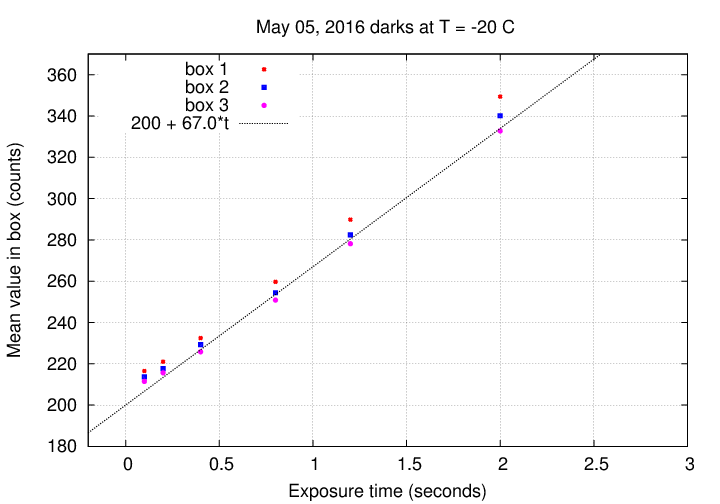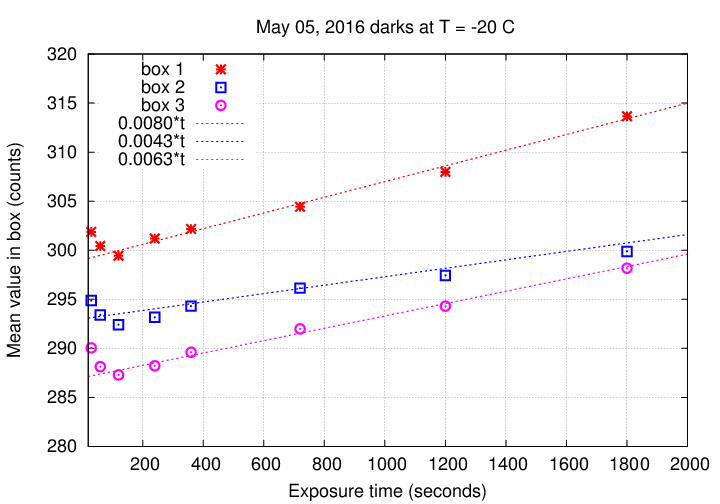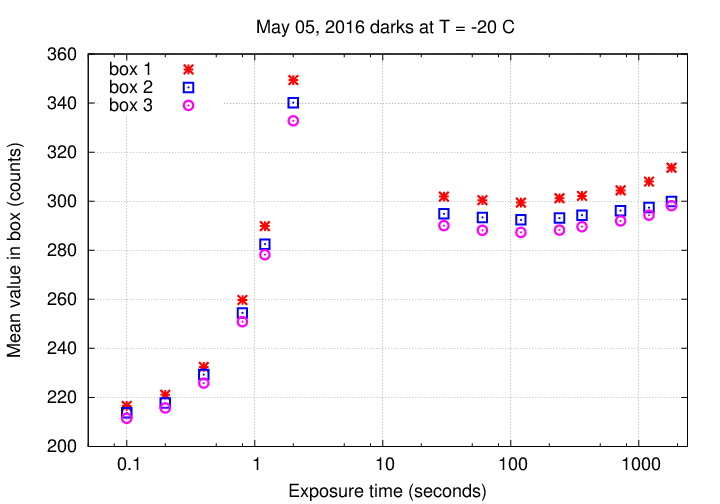
During the day of May 05, 2016, I acquired a set of dark frames using our ATIK 11000 camera. I wanted to investigate the somewhat peculiar nature of the dark current in this device.
The main setup was:
I took a series of images with a wide range of exposure times:
The sequence was to take one image each, in increasing order by exposure time, then a second image each, then a third image each. Something like:
0.1, 0.2, 0.4, 0.8, ..., 1200, 1800, 0.1, 0.2, 0.4, ..., 1200, 1800, 0.1, ...
I combined the three images at each exposure time using a median procedure, to elimate outliers due to cosmic rays. I then computed the mean value inside three boxes, each 30x30 pixels in size. The boxes were centered at
Here's an ASCII text file with the results of my measurements. I'll discuss the results below.
The normal behavior for a CCD is for the dark current to increase linearly with time, as the rate at which electrons are knocked free by thermal motions in the chip should be constant.
For the "short" exposures, we see that expected behavior. The signal in each pixel increases at a rate of about 67 counts per second.

Previous tests indicated that something happens at an exposure time of about 2.5 seconds. Therefore, let's look at the "long" exposure images separately.

Again, we see a linear increase in counts with time, at least for exposures longer than 100 seconds. The three different regions of the chip yield slightly different slopes, but the differences may not be significant; I have not indicated the uncertainty in each measurement.
However, the slopes are all MUCH smaller than for the short exposures: a factor of about 10,000 smaller, as a matter of fact.
Earlier tests indicate that the counts drop from a peak at about 2.5 seconds, fall to a minimum at some intermediate exposure time, then start increasing very slowly at the new rate. One can see a portion of this transition if one plots the entire range of values with a logarithmic scale on the X-axis:

This transition from one linear relationship to a very different linear relationship puzzles me. What is happening to cause it?
I had a very brief conversation about a month ago with the CEO of Atik Cameras, Steve Chambers. At that time, I had not run very many quantitative tests, and did not have tables of results to show him; it was just a few qualitative statements. He indicated that there was a reason for the dark current to behave in this sort of manner, but I'm afraid I have forgotten his explanation.
Can anyone enlighten me?
Last modified 5/5/2016 by MWR.